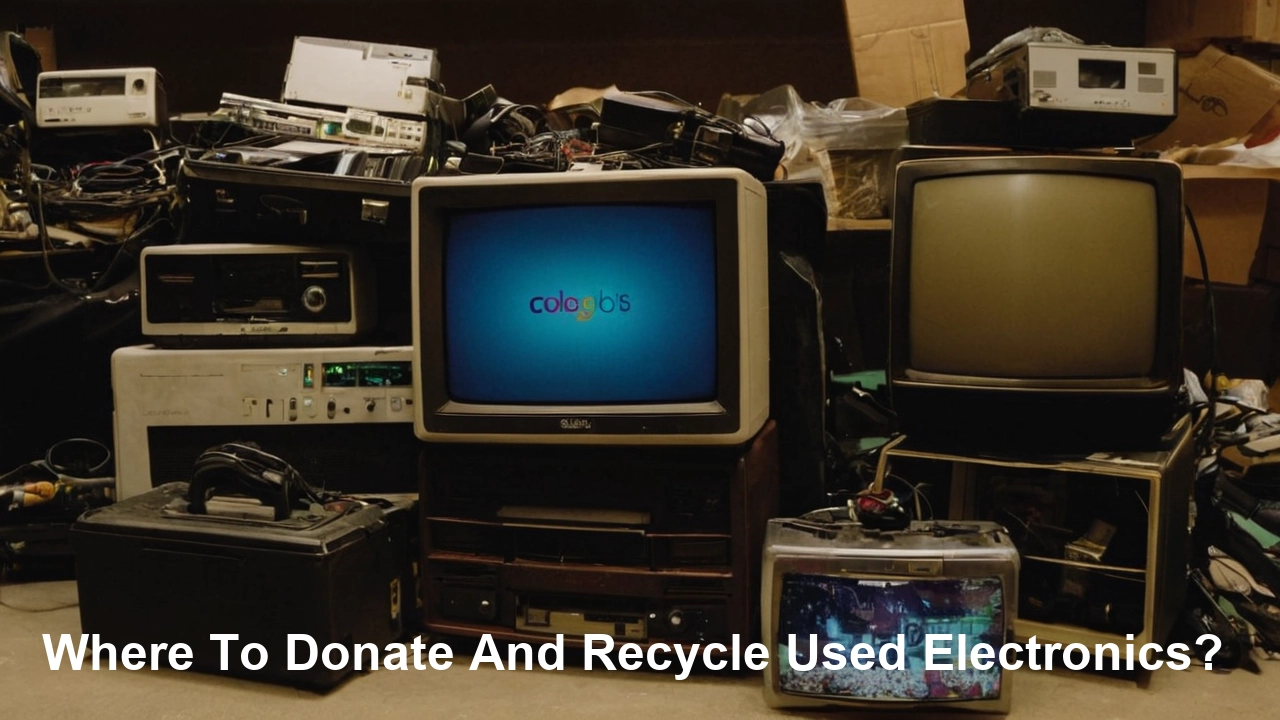
Today technology is reshaping the global environment at a rate that can be described only as unprecedented. What we are getting in terms of new gadgets and new electronics is almost every day that you can think of, which kind of makes old gadgets and electronics almost useless. This generation's rush for throwaway electronic gadgets is giving the world a gargantuan burden of e-waste. Electronic waste generation is on the increase by 3 to 5 percent every year according to the United Nations. To address this problem, it is about time that is answerable for the older gadgets that we own and learn how to manage their disposal. These devices can be donated, recycled or even repaired which all have a massive environmental influence when done.
10 New Ways to Donate and Recycle Your Old Electronics
1. Sell your devices: You should sell your old electronics to a retailer or an online market. That way, you can make some money on the side and provide your device to someone else to use as well.
2. Donate to schools, nonprofits, and libraries: To my knowledge, many schools, nonprofits, libraries, etc., could all find great utility from your electronics no longer in like-new condition. For instance, a laptop may be used in a computer pool or on the other hand an old smartphone could be donated to a domestic violence shelter for use in emergencies.
3. Give electronics to friends and family: Should your devices be in a relatively good condition, then, you might consider donating them to friends or relatives who might find use with them.
4. Participate in electronic recycling programs: A lot of organisations from the local and national levels operate electronic recycling programs. These programs comprise the collection of old electronics, refurbishing the devices, and disposing of all unsustainable materials.
5. Participate in manufacturer's take-back programs: Some manufacturers of electronics products have take-back programs customers can use to return their old products for recycling or other uses. Examples include the Apple Trade in programme, Samsung Sustainable Smart programme and Dell Reconnect programme.
6. Participate in national collection events: National Electronics Recycling Mission (NERM) Week and similar e-waste collection days are good ways to recycle electronics.
7. Visit local electronic recycling centres: They have facilities that recycle different electronics and it is most probable that your local community has one or more of such centres. Be sure to check on whether they will accept your specific devices before making the trip.
8. Use an online electronic recycling service: Many online services will come and collect your electronic waste and recycle it for you. The companies that offer cellular recycling services are; Gazelle, Eco-Cell, and Recomiendame.
9. Donate to science and technology education programs: Old typewriters, laptops, and other old electronics can be used to teach students about computer science, coding and electronics.
10. Properly dispose of non-recyclable electronics: Some electronic gadgets cannot be recycled. There are cases when materials will be just too dangerous to recycle, safely. If so, consider re-considering proper disposal of these items by taking them to a local hazardous waste depot, or an e-waste recycling depot.
Detailed Explanation:
1. Sell your devices: Big e-commerce sites such as eBay, Facebook Marketplace, or Craigslist are the best places to sell used electronics. It can be useful in a way to recoup some of the money that was put towards the old device and give it a second life.
2. Donate to schools, nonprofits, and libraries: Most schools, nonprofits, and libraries could use updated technology. This way, giving your used electronics means helping schools and programs to be funded, while not harming the environment by disposing of electronics. Always pay attention to the requirements that each organization has so that you can donate.
3. Give electronics to friends and family: I suggest taking your old electronic devices to your friend's relatives' homes too to make use of the devices. This is particularly true in devices that have been personalized due to their owners’ sentiments.
4. Participate in electronic recycling programs: Numerous organizations, local governments and companies have gradually initiated electronic recycling programs. They help in managing and recycling of electronic waste discussed above. Some programs that are already in operation are Call 2 Recycle Consumer Recycling Environment Account (CREA) and Product Stewardship Information System (PSIS).
5. Participate in manufacturer's take-back programs: Most companies have set up take-back programs to deal with the ever-increasing e-waste stream. Many of these programs include an extensive product and device portfolio and offer environmentally sound disposal solutions to clients. These programs also motivate the public to embrace the right way of using and disposing of electronic products.
6. Participate in national collection events: National collection events thus reflected in the National Electronics Recycling Mission (NERM) Week that is aimed at acting as a one-stop centre where people and firms can take their electronics for recycling. In return, you can be sure to work towards the fight against the production of e-waste and the protection of the environment when you engage in these events.
7. Visit local electronic recycling centres: Most of the local areas have electronic recycling facilities where one can take several electronics. These centres help to control the environmental impact of e-waste that is such products used, reused, recycled or disposed of. It means one has to choose carefully which devices they want to use when they hey want to recycle at a centre and whether that particular centre accepts it or not.
8. Use an online electronic recycling service: Many companies have stepped up to the occasion and provided convenient means of recycling e-scrap through online services such as Gazelle, Eco-Cell and Recomiendame among others. These companies collect your devices and guarantee that will be accorded proper recycling or disposal. In the current trend, this service is more useful if you have a large amount of equipment to recycle or if you live in an area that does not have local recycling facilities.
9. Donate to science and technology education programs: Older electronic devices are also useful tools in computer science and coding classes that are also greatly useful for educators and students. Recycling your devices in these programs will go a long way in preparing the next generation of technologists and engineers while having the added benefit of removing electronics from landfills.
10. Properly dispose of non-recyclable electronics: Not all the items on the electronic devices list can be recycled as some of them contain dangerous compounds that cannot be recycled through standard techniques. In these cases, one has to ensure that these products are disposed of appropriately by taking or delivering them to hazardous waste disposal centres or centres handling electronic waste.
Conclusion
If we hope to slow down the increasing e-waste problem, donating and recycling your used electronics should be your next move. As you join the programs, you are contributing to your conservation efforts and closing the circuits on new electronic manufacturing., providing a new life for your old electronics instead of purchasing new ones. Therefore I encourage myself and everyone else to spare some time and rate their electronics’ condition, find out the best ways to recycle or donate electronics and leave the world a little bit better.





